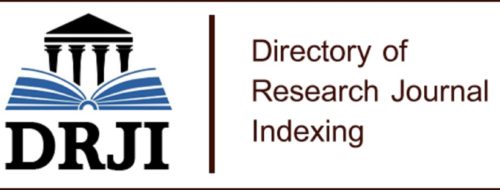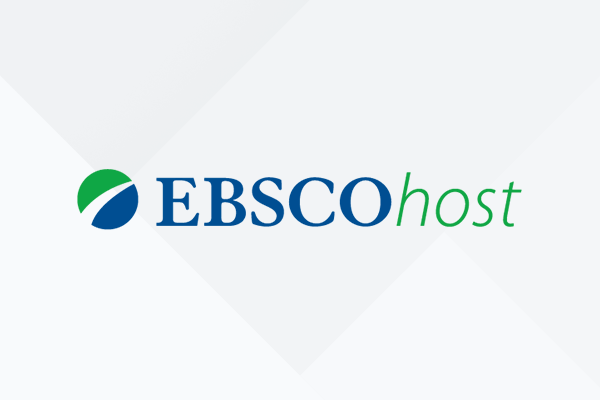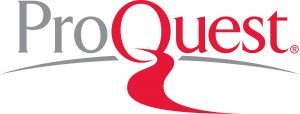Öz
Bu çalışma, çalışanlarda insan kaynakları yönetimi (İKY) uygulamalarından duyulan
memnuniyet algısının örgütsel bağlılık (duygusal bağlılık) üzerindeki etkisini ortaya çıkarmayı
hedeflemektedir. Van ili, Tuşba ilçesinde bulunan organize sanayi bölgesinde (OSB) faaliyette
bulunan işletmelerde 311 çalışan ile anket çalışması yapılmıştır. Çalışma sonunda elde edilen veriler
SPSS 23.0 ve Lisrel 8.80 programlarından yararlanılarak analizler yapılmıştır. Araştırma sonucunda;
insan kaynakları yönetimi uygulamalarından sadece “eğitim uygulamaları ve performans
değerlendirme sistemi” ile “örgütsel iletişim” boyutlarından duyulan memnuniyetin duygusal bağlılık
üzerinde pozitif yönde bir etki yarattığı görülmüştür. Ayrıca yapılan korelasyon analizinde duygusal
bağlılık ile örgütsel iletişim ve kariyer sistemi arasında pozitif ve düşük bir ilişkinin var olduğu
sonucuna varılmıştır.
Anahtar Kelimeler
Destekleyen Kurum
Van Yüzüncü Yıl Üniversitesi Bilimsel Araştırma Projeleri Koordinasyon Birimi
Proje Numarası
SBA-2019-8095
Kaynakça
- Acar, A. C. (2007). İşletmelerde ücret yapısının oluşturulması ve bir uygulama. İstanbul: Literatür Yayıncılık.
- Aktar, A., & Pangil, F. (2018). Mediating role of organizational commitment in the relationship between human resource management practices and employee engagement. International Journal of Sociology and Social Policy, 38(7/8), 606-636.
- Aladwan, K., Bhanugopan, R., & D’Netto, B. (2015). The effects of human resourcemanagement practiceson employees’organisational commitment. International Journal of Organizational Analysis, 472-492.
- Albrecht, S. (2012). The influence of job, team and organizational level resources on employee well-being, engagement, commitment and extra-role performance: test of a model. International Journal of Manpower, 33(7), 840-853.
- Allen, N., & Meyer, J. (1990). The measurement and antecedents of affective, continuance and normative commitment to the organization. Journal of Occupational Psychology(63), 1-18.
- Allen, R., & Helms, M. (2002). Employee perceptions of the relationship between strategy, rewards and organizational performance. Journal Business Strategies, 19(2), 115-139.
- Breevaart, K., Bakker, A., Hetland, J., Demerouti, E., Olsen, O., & Espevik, R. (2014). Daily ransactional and transformational leadership and daily employee engagement. Journal Of Occupational and Organizational Psychology, 87(1), 138-157.
- Brunetto, Y., & Farr‐Wharton, R. (2004). Does the talk affect your decision to walk: A comparative pilot study examining the effect of communication practices on employee commitment post managerialism. Management Decision, 42(3/4), 579-600.
- Büyüköztürk, Ş. (2002). Faktör Analizi: temel kavramlar ve ölçek geliştirmede Kullanımı. Kuram ve Uygulamada Eğitim Yönetimi(32), 470-482.
- Çakmak, A., & Biçer, İ. (2006). Performans değerleme sisteminden duyulan memnuniyeti etkileyen unsurlar. İTÜ Sosyal Bilimler Dergisi, 3(1), 3-14.
- Çapık, C. (2014). Geçerlik ve güvenirlik çalışmalarında doğrulayıcı faktör analizinin kullanımı. Anadolu Hemşirelik ve Sağlık Bilimleri Dergisi, 17(3), 196-205.
- Çıngı, H. (1994). Örnekleme Kuramı. Ankara: Hacettepe Üniversitesi Fen Fakültesi Basımevi.
- Delery, J., & Doty, D. (1996). Modes of theorizing in strategic human resource management: Tests of universalistic, contingency, and configurational performance prediction. Academy of Management Journal, 802-835.
- Dittmer, P. R. (2002). Dimensions of the hospitality industry. New York: John Wiley & Sons.
- Goh, S., & Pavic, I. (2013). Applying action learning to executive management training and development: integrating reflections, experience, content and action. Human Resources Development and Management, 13(1), 23-41.
- Groeschl, S. (2003). Cultural implications for the appraisal process. Cross Cultural Management:An International Journal, 10(1), 67-79.
- Gürbüz, S., & Bekmezci, M. (2012). İnsan kaynakları yönetimi uygulamalarının bilgi işçilerinin işten ayrılma niyetine etkisinde duygusal bağlılığın aracılık ve düzenleyicilik rolü. İstanbul Üniversitesi İşletme Fakültesi Dergisi, 41(2), 189-213.
- Hall, D., & Foster, L. (1977). A Psychological success cycle and goal setting: goal, performance, and attitudes. Academy of Management Journal, 20(2), 282-290.
- Handel, M., & Gıttleman, M. (2004). Is there a wage payoff to innovative work practices? Industrial Relations, 43(2), 67-97.
- Hassan, A. (2002). Organizational justice as a determinant of organizational commitment and intention to leave. Asian Academy of Management Journal, 7(2), 55-66.
- Heshizer, B. (1994). The impact of flexible benefits plans on job satisfaction, organizational commitment and turnover intentions. Benefits Quarterly, 10(4), 84.
- Huang, Y., Ma, Z., & Meng, Y. (2018). High‐performance work systems and employee engagement:empirical evidence from China. Asia Pacific Journal of Human Resources, 341-359.
- Ihionkhan, P., & Aigbomian, E. (2014). The link between human resource management practices and organisatıonal commitment. Indian Journal Of Management Science, 10-17.
- İlhan, M., & Çetin, B. (2014). LISREL ve AMOS programları kullanılarak gerçekleştirilen yapısal eşitlik modeli (YEM) analizlerine ilişkin sonuçların karşılaştırılması. Eğitimde ve Psikolojide Ölçme ve Değerlendirme Dergisi, 5(2), 26-42.
- Jöreskog, K., & Sörbom, D. (1996). LISREL 8: User’s Reference Guide. Chicago: Scientific Software International.
- Kılıç, S. (2016). Cronbach’ın alfa güvenirlik katsayısı. Journal of Mood Disorders, 6(1), 47-48.
- Meyer, J., & Allen, N. (1991). A three-component conceptualization of organizational. Human Resource Management Review, 1(1), 61-89.
- Meyer, J., Allen, N., & Smith, C. (1993). Commitment to organizations and occupations: Extension and test of a three-component conceptualization. Journal of applied psychology, 78(4), 538-551.
- Milne, P. (2007). Motivation, incentives and organisational culture. Journal of Knowledge Management, 11(6), 28-38.
- Minbaeva, D. B. (2005). HRM practices and MNC knowledge transfer. Personnel Review, 34(1), 125-144.
- O’Driscol, M., & Randall, D. (1999). Perceived organisational support, satisfaction with rewards, and employee job ınvolvement and organisational commitment. Applıed Psychology: An Internatıonal Revıew, 48(2), 197-209.
- Othman, A. E. (2009). Strategic HRM practices: perspectives of Malaysian and Japanese owned ompanies in Malaysia. Global Business and Management Research: An International Journal, 1(1), 1-22.
- Parker, O., & Wright, L. (2011). Pay and employee commitment: the missing link. Ivey Business Journal, 65(1), 70-79.
- Porter, L., & Steers, R. (1973). Organizational, work, and personal factors in employee turnover and absenteeism. Psychological Bulletin, 80(2), 151-176.
- Reisinger, Y., & Turner, L. (1999). Structural equation modeling with LISREL: aplication in tourism. Tourism Management(20), 71-88.
- Van De Voorde, K., & Beijer, S. (2015). The role of employee HR attributions in the relationship between high‐performance work systems and employee outcomes. Human Resource Management Journal, 25(1), 62-68.
- Yılmaz, V. (2004). Lisrel ile yapısal eşitlik modelleri:tüketici şikayetlerine uygulanması. Sosyal Bilimler Dergisi, 77-90.
- Yılmaz, V., Çatalbaş, G., & Çelik, E. (2009). Kredi kartı kullanma niyetini etkileyen faktörlerin yapısal eşitlik modeliyle araştırılması. Bankacılar Dergisi(68), 20-29.
- Zhou, J. (2003). When the presence of creative coworkers is related to creativity: role of supervisor close monitoring, developmental feedback, and creative personality. Journal of Applied Psychology, 88(3), 413-422.
The Effect of Human Resources Management Practices on Organizational Commitment: A Van Province Example
Öz
The purpose of this study is to reveal the effect of employee satisfaction on human
resources management practices on organizational commitment (emotional commitment). A survey
was conducted with 311 employees in enterprises operating in the organized industrial zone (OIZ) in
the province of Tusba, Van. The data obtained at the end of the study were evaluated using SPSS 23.0
and Lisrel 8.80 programs. As a result of the research; It has been observed that only satisfaction with
the “training practices and performance evaluation system” and “organizational communication”
dimensions of human resources management practices has a positive effect on emotional
commitment. In addition, in the correlation analysis, it was concluded that there is a positive and low
relationship between emotional commitment and organizational communication and career system.
Anahtar Kelimeler
Proje Numarası
SBA-2019-8095
Kaynakça
- Acar, A. C. (2007). İşletmelerde ücret yapısının oluşturulması ve bir uygulama. İstanbul: Literatür Yayıncılık.
- Aktar, A., & Pangil, F. (2018). Mediating role of organizational commitment in the relationship between human resource management practices and employee engagement. International Journal of Sociology and Social Policy, 38(7/8), 606-636.
- Aladwan, K., Bhanugopan, R., & D’Netto, B. (2015). The effects of human resourcemanagement practiceson employees’organisational commitment. International Journal of Organizational Analysis, 472-492.
- Albrecht, S. (2012). The influence of job, team and organizational level resources on employee well-being, engagement, commitment and extra-role performance: test of a model. International Journal of Manpower, 33(7), 840-853.
- Allen, N., & Meyer, J. (1990). The measurement and antecedents of affective, continuance and normative commitment to the organization. Journal of Occupational Psychology(63), 1-18.
- Allen, R., & Helms, M. (2002). Employee perceptions of the relationship between strategy, rewards and organizational performance. Journal Business Strategies, 19(2), 115-139.
- Breevaart, K., Bakker, A., Hetland, J., Demerouti, E., Olsen, O., & Espevik, R. (2014). Daily ransactional and transformational leadership and daily employee engagement. Journal Of Occupational and Organizational Psychology, 87(1), 138-157.
- Brunetto, Y., & Farr‐Wharton, R. (2004). Does the talk affect your decision to walk: A comparative pilot study examining the effect of communication practices on employee commitment post managerialism. Management Decision, 42(3/4), 579-600.
- Büyüköztürk, Ş. (2002). Faktör Analizi: temel kavramlar ve ölçek geliştirmede Kullanımı. Kuram ve Uygulamada Eğitim Yönetimi(32), 470-482.
- Çakmak, A., & Biçer, İ. (2006). Performans değerleme sisteminden duyulan memnuniyeti etkileyen unsurlar. İTÜ Sosyal Bilimler Dergisi, 3(1), 3-14.
- Çapık, C. (2014). Geçerlik ve güvenirlik çalışmalarında doğrulayıcı faktör analizinin kullanımı. Anadolu Hemşirelik ve Sağlık Bilimleri Dergisi, 17(3), 196-205.
- Çıngı, H. (1994). Örnekleme Kuramı. Ankara: Hacettepe Üniversitesi Fen Fakültesi Basımevi.
- Delery, J., & Doty, D. (1996). Modes of theorizing in strategic human resource management: Tests of universalistic, contingency, and configurational performance prediction. Academy of Management Journal, 802-835.
- Dittmer, P. R. (2002). Dimensions of the hospitality industry. New York: John Wiley & Sons.
- Goh, S., & Pavic, I. (2013). Applying action learning to executive management training and development: integrating reflections, experience, content and action. Human Resources Development and Management, 13(1), 23-41.
- Groeschl, S. (2003). Cultural implications for the appraisal process. Cross Cultural Management:An International Journal, 10(1), 67-79.
- Gürbüz, S., & Bekmezci, M. (2012). İnsan kaynakları yönetimi uygulamalarının bilgi işçilerinin işten ayrılma niyetine etkisinde duygusal bağlılığın aracılık ve düzenleyicilik rolü. İstanbul Üniversitesi İşletme Fakültesi Dergisi, 41(2), 189-213.
- Hall, D., & Foster, L. (1977). A Psychological success cycle and goal setting: goal, performance, and attitudes. Academy of Management Journal, 20(2), 282-290.
- Handel, M., & Gıttleman, M. (2004). Is there a wage payoff to innovative work practices? Industrial Relations, 43(2), 67-97.
- Hassan, A. (2002). Organizational justice as a determinant of organizational commitment and intention to leave. Asian Academy of Management Journal, 7(2), 55-66.
- Heshizer, B. (1994). The impact of flexible benefits plans on job satisfaction, organizational commitment and turnover intentions. Benefits Quarterly, 10(4), 84.
- Huang, Y., Ma, Z., & Meng, Y. (2018). High‐performance work systems and employee engagement:empirical evidence from China. Asia Pacific Journal of Human Resources, 341-359.
- Ihionkhan, P., & Aigbomian, E. (2014). The link between human resource management practices and organisatıonal commitment. Indian Journal Of Management Science, 10-17.
- İlhan, M., & Çetin, B. (2014). LISREL ve AMOS programları kullanılarak gerçekleştirilen yapısal eşitlik modeli (YEM) analizlerine ilişkin sonuçların karşılaştırılması. Eğitimde ve Psikolojide Ölçme ve Değerlendirme Dergisi, 5(2), 26-42.
- Jöreskog, K., & Sörbom, D. (1996). LISREL 8: User’s Reference Guide. Chicago: Scientific Software International.
- Kılıç, S. (2016). Cronbach’ın alfa güvenirlik katsayısı. Journal of Mood Disorders, 6(1), 47-48.
- Meyer, J., & Allen, N. (1991). A three-component conceptualization of organizational. Human Resource Management Review, 1(1), 61-89.
- Meyer, J., Allen, N., & Smith, C. (1993). Commitment to organizations and occupations: Extension and test of a three-component conceptualization. Journal of applied psychology, 78(4), 538-551.
- Milne, P. (2007). Motivation, incentives and organisational culture. Journal of Knowledge Management, 11(6), 28-38.
- Minbaeva, D. B. (2005). HRM practices and MNC knowledge transfer. Personnel Review, 34(1), 125-144.
- O’Driscol, M., & Randall, D. (1999). Perceived organisational support, satisfaction with rewards, and employee job ınvolvement and organisational commitment. Applıed Psychology: An Internatıonal Revıew, 48(2), 197-209.
- Othman, A. E. (2009). Strategic HRM practices: perspectives of Malaysian and Japanese owned ompanies in Malaysia. Global Business and Management Research: An International Journal, 1(1), 1-22.
- Parker, O., & Wright, L. (2011). Pay and employee commitment: the missing link. Ivey Business Journal, 65(1), 70-79.
- Porter, L., & Steers, R. (1973). Organizational, work, and personal factors in employee turnover and absenteeism. Psychological Bulletin, 80(2), 151-176.
- Reisinger, Y., & Turner, L. (1999). Structural equation modeling with LISREL: aplication in tourism. Tourism Management(20), 71-88.
- Van De Voorde, K., & Beijer, S. (2015). The role of employee HR attributions in the relationship between high‐performance work systems and employee outcomes. Human Resource Management Journal, 25(1), 62-68.
- Yılmaz, V. (2004). Lisrel ile yapısal eşitlik modelleri:tüketici şikayetlerine uygulanması. Sosyal Bilimler Dergisi, 77-90.
- Yılmaz, V., Çatalbaş, G., & Çelik, E. (2009). Kredi kartı kullanma niyetini etkileyen faktörlerin yapısal eşitlik modeliyle araştırılması. Bankacılar Dergisi(68), 20-29.
- Zhou, J. (2003). When the presence of creative coworkers is related to creativity: role of supervisor close monitoring, developmental feedback, and creative personality. Journal of Applied Psychology, 88(3), 413-422.
Ayrıntılar
| Birincil Dil | Türkçe |
|---|---|
| Bölüm | Makaleler |
| Yazarlar | |
| Proje Numarası | SBA-2019-8095 |
| Yayımlanma Tarihi | 30 Nisan 2021 |
| Kabul Tarihi | 12 Şubat 2021 |
| Yayımlandığı Sayı | Yıl 2021 |
Cited By
Muhasebe Çalışanlarının İnsan Kaynakları Yönetimi Uygulamaları ve İş Tatminine Yönelik Algılarının Örgütsel Bağlılıkları Üzerindeki Etkisi
International Journal of Entrepreneurship and Management Inquiries
https://doi.org/10.55775/ijemi.1216346













ERÜ İktisadi ve İdari Bilimler Fakültesi Dergisi 2021 | iibfdergi@erciyes.edu.tr
Bu eser Creative Commons Atıf-Gayri Ticari-Türetilemez 4.0 Uluslararası Lisansı ile lisanslanmıştır.


